Contact Us
-
 +91 8144414272
+91 8144414272  rsvneurosurgery@gmail.com
rsvneurosurgery@gmail.com www.drvigneshneurosurgeon.com
www.drvigneshneurosurgeon.com






Our aim is to provide the highest quality, affordable and world class healthcare. One stop center for Head injury,Brain tumors, Epilepsy, fits,back pain, neck pain, spinal cord injury, spine problems, hydrocephalus, seizures All patients are assured of the best service in a very non-stressful ambiance and thorough attention is paid to hygiene and sanitation. We have an unwavering commitment towards medical ethics. Healthcare is simplified like never before! With our rich knowledge and experience, be assured of quality healthcare service.

Brain trauma is the injury resulted from a violent blow or jolt in the head or body. Objects like bullets or shattered piece of skull piercing through brain tissue cause traumatic brain injury.
Mild traumatic brain injury can impair the brain cells transitorily. The sensory symptoms include sensitivity to light, blurred vision, bad taste in the mouth or ringing in the ears. The cognitive symptoms include difficulty in sleeping, depressed feeling, mood swings, memory problem, loss of consciousness. The physical symptoms and signs include nausea, headache, difficulty in speaking, loss of balance, fatigue.
Severe traumatic brain injury results in torn tissues, bleeding, bruising and other physical damage to the brain which can be a long term effect or eventually lead to death. The physical symptoms and signs are convulsion or seizures, dilation of pupils, clear fluids draining from the ear and nose, numbness in the fingers and toes and loss of coordination. The cognitive symptoms include slurred speech, agitation, combativeness, profound confusion, coma or other conscious related disorder.
Common causes can be a fall, violence, combat injuries, sports injury, vehicle collisions. Children between the age of 0-4 years old, adults older than 60, young adults between 15 to 24 and males in any age group have the risk of traumatic brain injury.
The major types of head injuries are concussion, intracranial hematoma, contusion, skull fracture, haemorrhage, oedema, diffuse axonal injury.
Head injuries are diagnosed with Glasgow Coma Scale (GCS). This test assesses your mental health. The higher the score, the severity of the injury. Dr. Raja S. Vignesh understands the circumstance of the injury. If it’s a head injury mostly you won’t remember the injury and the details of it. It is important for the doctor to determine whether you lost consciousness in recent or for a long time. You will also be examined for signs of trauma like swelling and bruising and take up a neurological examination. This test evaluates your nerve functioning by accessing your muscle strength and control, sensation and eye movement. Visit his place to get one of the best therapy in neuro-ailments.
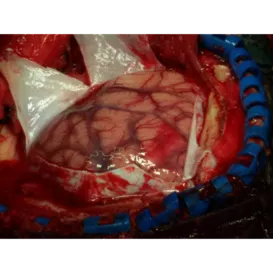
The mass of abnormal cells in the brain is known as a brain tumor. Our skull is very rigid. Brain tumors can be benign (non-cancerous) and malignant (cancerous). When there is tumor growth within the skull it increases the pressure. It damages the brain and is life-threatening.
Brain tumors are of two types primary and secondary.
Primary tumors originate from the brain and develop from nerve cells, brain cells, membranes like meninges, glands.
Secondary tumors start from one part of the body and spread to the brain and mostly spread from lung cancer, skin cancer, kidney cancer and breast cancer.
tumors that develop from glial cells are known as gliomas. Glial cells break down dead neurons, clean up cellular waste, provide nutrition to the CNS (Central Nervous System) and support the structure of the CNS.
The different types of tumors that occur in glial cells are astrocytic tumors that originate in the cerebrum, glioblastomas the most aggressive type that originates from the supportive brain tissues and oligodendroglial tumors that originates in the frontal-temporal lobes.
Other primary tumors can be pituitary tumors, meningiomas which originate in the meninges, ependymomas, pineal gland tumors, CNS lymphomas, schwannomas that are found in the protective cover of the nerves (myelin sheath) known as Schwann cells.
Some common symptoms of brain tumors are confusion, memory loss, clumsiness, difficulty to read, write and walk, loss of balance, muscle weakness, uncontrolled movements and eye problems.
Brain tumors can only be diagnosed by a physical examination which includes a detailed neurological examination. Dr. Raja S. Vignesh provides you with one of the best treatment and conducts tests to check cranial nerves are intact which originate in the brain. You will also be evaluated for your ability to do mathematical ability, coordination, memory and muscle strength. Other tests also include a CT scan and MRI of the head, Angiography, X-Ray of the Skull, and Biopsy.
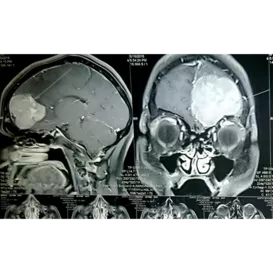
Spine surgery also known as neurosurgery is concerned with the diagnosis, surgical treatment, prevention of disorders that affect the nervous system including the peripheral nervous system, spinal cord, brain and cerebrovascular system.
The advancements in neurosurgery are so fine they use chisels, dissectors, elevators, forceps, hooks, probes, power tools, robots, suction tubes, distractors, curettes, impactors and many more which is been used for a relatively long time. These tools are designed with the desired accuracy of crafted edges with millimetre. Robots are only now recently used in the neurological operating room. The University of Utah developed a device for computer-aided design which defines a cutting tool path for a robotic cranial drill using an image-guided system.
Generally, neurosurgery includes conditions like neuro-trauma or other neuro-emergencies like intracranial haemorrhage.
There are various division in neurosurgery:
1. Skull based surgery
2. Spinal neurosurgery
3. Oncological neurosurgery
4. Peripheral nerve surgery
5. Vascular neurosurgery
6. Pediatric neurosurgery
7. Stereotactic neurosurgery
Neurosurgery includes modern methods that include CT (Computed tomography), MRI (Magnetic resonance imaging), PET (Position emission tomography), MEG (Magnetoencephalography) and stereotactic radiosurgery.
In conventional surgery involves opening the skull thereby creating a large opening to access the brain. Modern techniques involve smaller openings with microscopes and endoscopes. Microsurgery is used in various aspects of neurological surgery.
Procedures like laminectomy, microdiscectomy and artificial disc replacement rely on microsurgery. Neurosurgery of the spine covers cervical, thoracic and lumbar regions. It includes spinal cord compression that occurred due to trauma, spondylosis or arthritis of the spinal discs.
An excellent spine surgeon is dedicated to patient care and keen on bringing success outcomes. Will be willing to learn new practices and techniques while excelling in standard approaches and techniques. One must also be a good communicator sparing time to explain the need for the surgery and all the treatment options and so is Dr. Raja S. Vignesh.
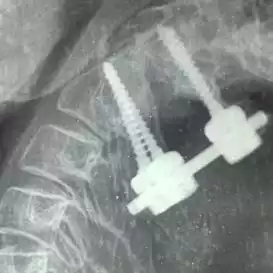
Neurology is the branch of science that deals with problems affecting the nervous system. Structural, electrical or biochemical abnormalities of the brain, spine or other nerves can lead to neurological problems. This can cause muscle weakness, paralysis, seizures and loss of sensation.
The causes of neuro problems vary and can include genetic disorders, congenital abnormalities, lifestyle changes, malnutrition, brain/spine/nerve injury.
There are about 470 neurological conditions in total. Few ailments like stroke and head injury might be cured treated at the right time and medicine. Conditions like motor neurone disease and muscular dystrophy are degenerative.
The most common neurological problems are Parkinson’s disease, Seizures, Stroke and Dementia.
Parkinson's syndrome is a nervous system disorder that affects our actions. It affects people around the age of 60. The symptoms are a stiff face, constipation, muscle stillness, tremor in hands and fingers, slurred speech and reduced smell. Usually, the symptoms worsen over time.
Dementia mostly is related to a group of diseases like Alzheimer’s which causes brain failure. Dementia spikes as we age and leads to continuous loss of brain cells and tissues. This can affect our perceptions, thinking, memory, behaviour and emotions.
The changes in the brain's electrical activity are known as seizures. The symptoms of seizures vary with the severity of the seizures. Some common symptoms are loss of awareness, uncontrolled jerking movements of the hands and legs, temporary confusion and emotional symptoms like anger, anxiety. Early treatment can control seizures and avoid long term complications like memory loss or brain damage. A seizure is mostly resulted due to epilepsy.
Neurological conditions and related treatments are more complex and tough to interpret by those affected, their family ad friends.
Dr Raja S. Vignesh is here to guide you during this journey by rendering you with expert solutions and erudition on neurological conditions and problems.
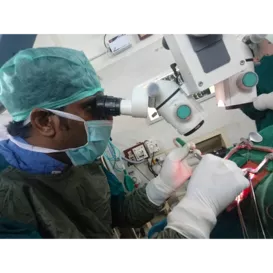
A brain aneurysm is the bulging of the blood vessels in the brain. It is also known as an intracranial aneurysm or cerebral aneurysm. When a brain aneurysm bursts it can lead to conditions like stroke, brain damage and lead to death. A brain aneurysm is triggered to rupture with many factors like intensive anger, excessive exercise, soda/coffee consumption. Some aneurysms develop due to a person's lifestyle, some are from brain injuries and some are inherited. Anyone could be affected by aneurism but people with atherosclerosis are at higher risk of developing brain aneurysms. It is more common in the age of 35 - 60. Other factors may include alcohol and drug abuse, head injury and cerebral arteriovenous malformation.
Aneurysm shows no symptoms until they rupture and require immediate medical care.
→Symptoms of an unruptured aneurysm are seizures, headache, blurred vision, dizziness.
→Symptoms of a ruptured aneurysm include stiffness of the neck, drooping eyelid, sensitivity to light and trouble speaking and change in mental state and walking, convolutional seizures, loss of consciousness and nausea and vomiting.
It needs qualified professionals to diagnose brain aneurysm. Clipping and coiling are the two treatments done for a brain aneurysm. Diagnosis of this aneurysm requires CT scans, lumbar puncture or angiography.
About 10% of the people die before medical care and if untreated 50% will die within a month.
You can follow a healthy diet with less trans fat and sugar. Exercise regularly and avoid alcohol consumption and smoking. Most people live their entire life without knowing they are affected by an aneurysm. Carefully listen to your body and give medical attention when needed.
Dr. Raja S. Vignesh provides you with the best treatment in this area. He is a neuro surgent. If you find yourself with any neuro problems kindly approach Dr. Raja for a successful treatment

The condition where the accumulation of cerebral fluid within the brain occurs is known as Hydrocephalus. It creates elevated pressure in the brain.
The symptoms vary accordingly with their chronicity. Acute dilation in the ventricular system causes increased intracranial pressure. Symptoms include nausea, vomiting, papilledema, headaches, sleepiness or coma.
Chronic dilation which mostly affects the elderly has an insidious onset with Adam's triad. The typical manifestation of distinct entity normal pressure hydrocephalus is gait instability, dementia and urinary incontinence. Symptoms include hearing loss, pressure on the auditory pathways disrupting the communication of the inner ear fluid.
They occur in 2 types: Congenital and Acquired. Congenital hydrocephalus occurs in an infant even before birth. It develops in the uterus during fetal development. The most common cause is aqueductal stenosis which narrows the passage between the 3rd and 4th ventricles in the brain is blocked or too narrow to pass cerebral fluid to the brain. Hence fluid accumulates in the upper ventricles causing hydrocephalous.
An acquired condition is a consequence of brain tumour, intracranial haemorrhage, head trauma, meningitis or CNS infections.
Hydrocephalus has multifactorial causes like impaired CSF flow, excessive CSF production or reabsorption. It can be classified into 2 types communicating and non communicating and both forms can be either congenital or acquired.
Communicative hydrocephalus is effected due to injured CSF reabsorption in the lack of obstruction of CSF flow between ventricles and subarachnoid space. It is also understood as nonobstructive hydrocephalus.
Non-communicating hydrocephalus is caused due to CSF flow obstruction. It is also understood as obstructive hydrocephalus.
The treatment is surgical creating a way to drain the excess fluid. For the short term, the extraventricular drain is used and in long term, various types of the cerebral shunt are used. Most shunts drain into the peritoneal cavity and sometimes at the pleural cavity, gall bladder and right atrium.
To get treated, approach Dr. Raja S. Vignesh. He endeavours to give you the ablest medications with better equipment.
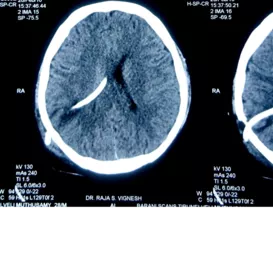
Our aim is to provide the highest quality, affordable and world class healthcare. One stop center for Head injury,Brain tumors, Epilepsy, fits,back pain, neck pain, spinal cord injury, spine problems, hydrocephalus, seizures All patients are assured of the best service in a very non-stressful ambiance and thorough attention is paid to hygiene and sanitation. We have an unwavering commitment towards medical ethics. Healthcare is simplified like never before! With our rich knowledge and experience, be assured of quality healthcare service.
 +91 8144414272
+91 8144414272  rsvneurosurgery@gmail.com
rsvneurosurgery@gmail.com www.drvigneshneurosurgeon.com
www.drvigneshneurosurgeon.com